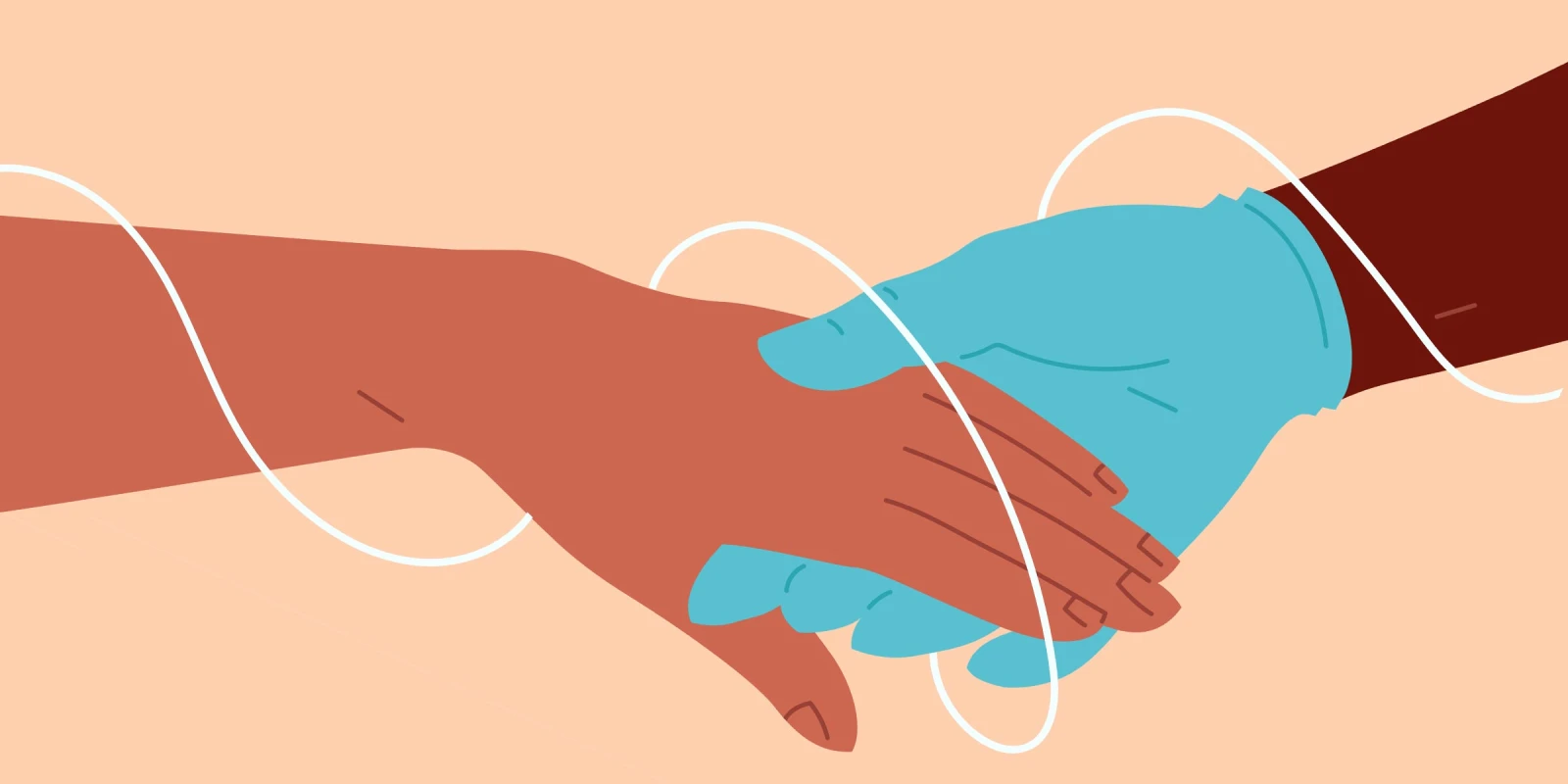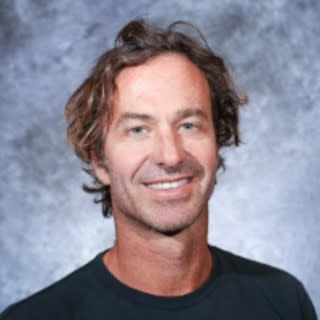One of life’s great paradoxes is that it must be lived forward but can only be understood backward.
Søren Kierkegaard, the Danish existentialist, is credited with that quote. He was 42 when he died. Though he lived in the 19th century, his paradox is as true then as it is today in trying to understand all that has changed in our medical lives since the COVID-19 pandemic — the rise of telemedicine, the substitution of Zoom for meeting colleagues, and the decay of healing’s most critical foundation, the comingling of human souls and the magic that springs from the intimacy of shared space.
When I first met Kimberly, she was the same age as Kierkegaard on the day he died. I saw her name on my schedule next to the words “Establish Care” and then, innocently enough, “tele.” Four letters that claimed so little space but meant so much. I wouldn’t be meeting Kimberly face-to-face. Instead, she would be one more image on my screen, a two-dimensional substitute for the personal office visit I used to love. But the world has changed. And now, an array of projected pixels and compressed sounds are what’s left, the complexity of the human condition filtered into 0s and 1s.
Don’t get me wrong. I love telemedicine, sort of. Through the translation, an efficiency has emerged. There’s a safety in the separation. My notes get finished quicker. There’s less mire and murk from which to extract oneself from the roots of entanglement that patients bring.
But so, too, do I sense something lost.
And then a knock on the door, “Your 10:30 is waiting.”
I was still with my 10:00, the face of a young man with a sore shoulder on my screen. I clicked mute. “I thought my 10:30 was a tele.”
“She came to the clinic instead.”
And so it was. Our destinies’ course altered. The human complexity unfiltered once again.
Mire and murk may be too strong. But perhaps some of you know of which I speak. Medicine is not a clear reflection of the science on which it’s based. It’s sloppy. It’s human. The emotions swirl in shades of greys, data that map between the 0s and 1s.
“We’re almost finished,” I told the nurse, unclicking mute and telling the face with the shoulder an exam was in order and P.T. would likely help. And then he was gone with the click of a mouse. Like I said, it’s easier with the separation. The myriad greys filtered to finite by the translation of data from analog to less real.
Stepping out, I grabbed the thin chart that was Kimberly’s. As such, my construct of her was a blank slate. I knocked on the door and walked in, my mind quickly coloring in the shades between the lines that defined her. Her meek gaze, her reserved hope, and a desperation beneath it all, for her to show me all the ways she hurt, for her to make me understand. Suffering was her gestalt. In the way of victims. And in too many ways to keep track.
I’ve met Kimberly before. Too many times. She has different faces and different names, but after so long, a physician can recognize the patterns. The list of complaints are just the phenotypes.
I notated every complaint. And as I shared her pain and considered her diagnoses and treatments, the space between us narrowed. The roots of all her suffering wrapped around my feet, my arms, my heart. There’s a murk that seeps in from all around, when the pegs don’t fit the holes, when the patients don’t read our textbooks. Oh, what I wouldn’t do for a bladder infection, a red and swollen ear drum, a right lower quadrant that hurt when I poked.
We did our thing, Kimberly and I. Labs to draw. Medications to try. Lifestyle modifications. Alternative testing should Western Medicine fall short. But the half hour swelled like a balloon too big and ready to pop. And the murk and mire were growing thick. I feel guilty saying it, but COVID-19 had its gifts. Not to diminish all the devastation it wreaked. But the world of outpatient medicine stopped for a moment and we non-hospital-based docs were allowed to take a breath. And when it began again, something changed. Things moved slower. There seemed to be more space. And telemedicine was born.
I looked at my watch. I wished again for science and its simplicity of black and white in the way a man of faith might pray: a dipstick orange with nitrates, a prescription for 7 days of amoxicillin. Or, if it had to be this complicated, at least a computer screen between us. I thought I hated telemedicine. But here, perhaps, the filter might serve a purpose, to push Kimberly’s pain beyond arm’s reach.
And then a stillness in the space we held, Kimberly and me. I checked my ego. Remembered all the face of every Kimberly that came before. I could see the paths that stretched from here, all the potential therapies that would surely fail. Each next sentence like a footprint untracked, and the countless words and steps that would track them. But all of them wrong. After 23 years, I’ve finally begun to see all I don’t know and accept what I can’t control.
And in that stillness, a crack. And through it, a beam of light. I recognized at once all the risk the next step would demand. But Kierkegaard had something to say about that as well. “To dare is to lose one’s footing momentarily. Not to dare is to lose oneself.”
And so I asked the question that would not have been allowed through a screen — the screen that would have stolen it all. The beam of light is analog. In telemedicine, there is no crack. And that which would have been filtered out lies at the very heart of what medicine is. The sharing of physical space is sacred. Only there does true healing alight.
I asked her about her childhood. And, if the little girl that lived inside was ever not safe?
And then, a flooding through the crack. And the beginning of a healing that could not have been without the hearts and bones that were hers and mine. Not from this or that drug. But from that vulnerable space in which forgiveness and love flow, in which a fresh dialogue is born between Kimberly and the little girl that still lived inside.
And then it was time to say goodbye. At the end that was at once a beginning. Not with a click of a mouse. Not with the bumping of a fist. But with a hug.
We stand on the precipice overlooking a past we once knew. Kierkegaard’s river of time is poised to flow in reverse. We’re vaccinated. Many of us have had it once. The mandates are at their twilights. The masks are coming off. It’s time to turn off the computers and unlock the front doors.
And I can think I can understand it backward. As time moves forward once again. We lost so much in fear’s entanglement. The humanity in medicine is back. And the window of sacred healing is about to break open once again.
What do you think you've lost and gained in virtual visits? Share your vision for the future of virtual care in the comments.
Steve Rogoff, MD is a rural family practice, emergency, and functional medicine physician who lives in Hawaii. His interests include surfing, music, and playing with words. His writing can be found at www.steverogoff.com. Steve is a 2021–2022 Doximity Op-Med Fellow. All names and identifying information have been modified to protect patient privacy.
Image by fedrelena / GettyImages







